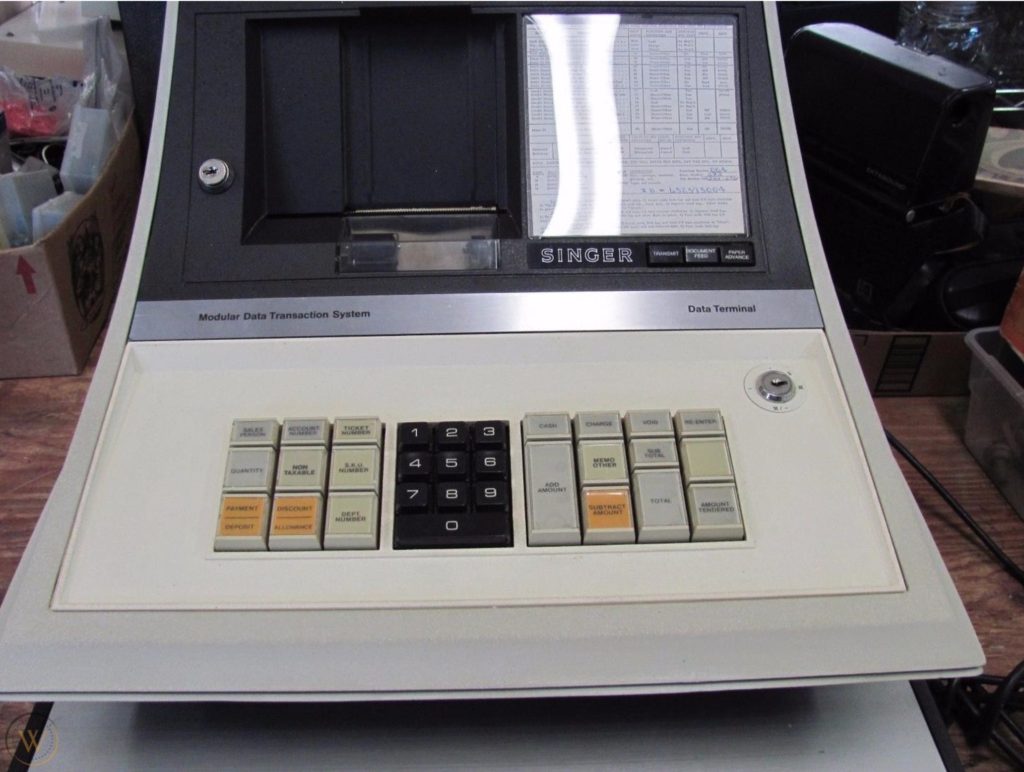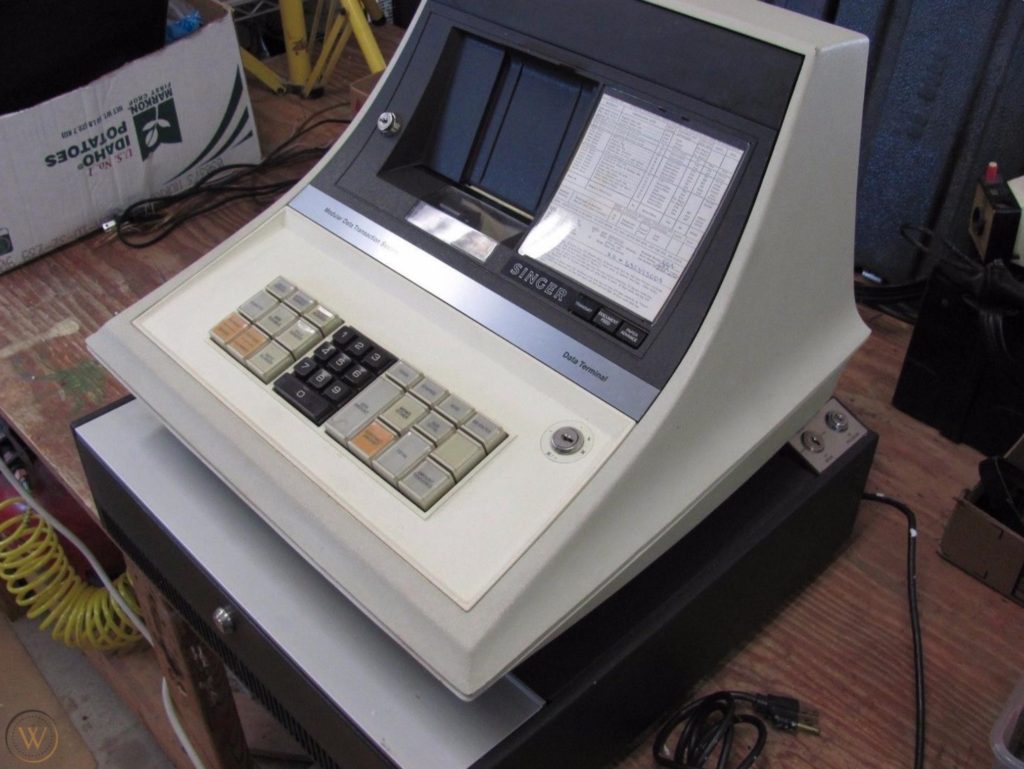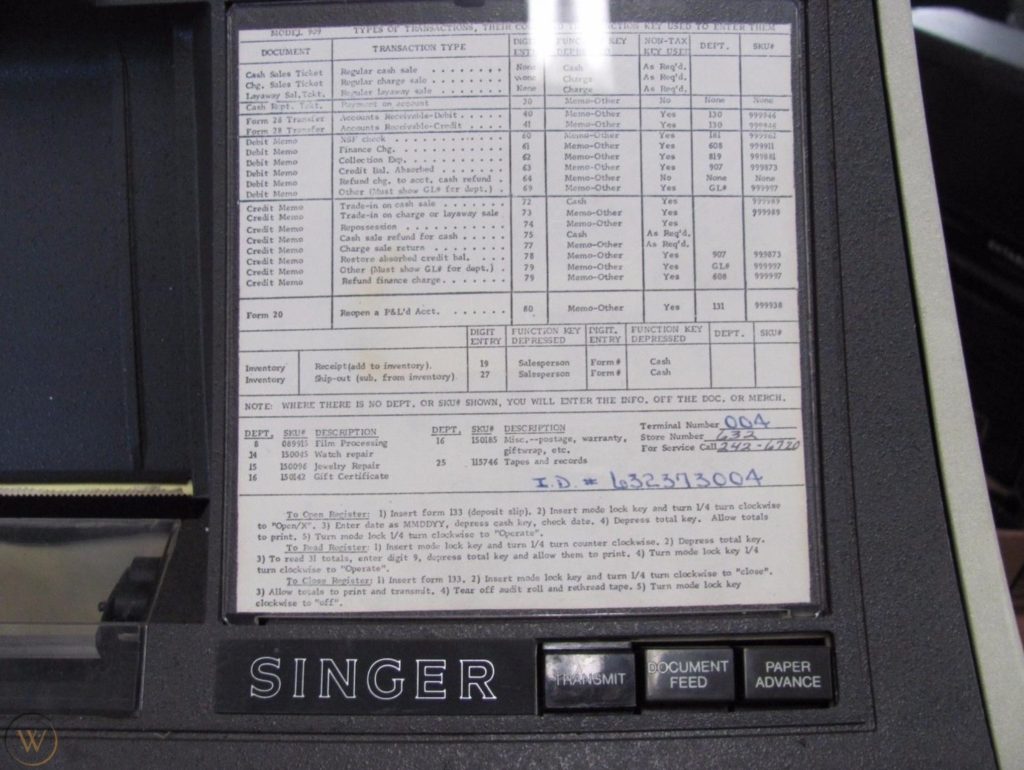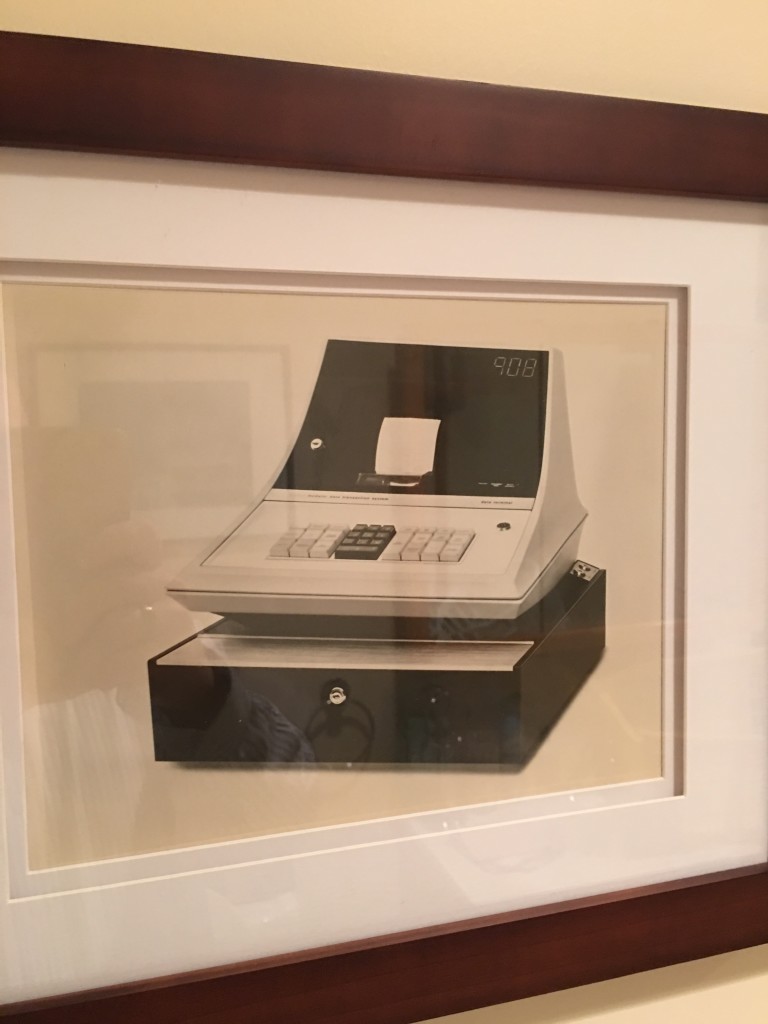
While surfing around on the internet I found some newish photos of the Singer-Friden 908 900 series Cash Register. The find made my heart leap because while the photos were on worthpoint.com, they indicated the source of the listing was eBay. Alas, I could not find a corresponding auction on eBay, because I would certainly go just about anywhere in the lower 48 states to pick up one of these cash registers. They’re in my “top five” of electronic point of sale system geekiness and probably one of the very first systems that caught my attention.
The Singer 908 ran on 2K of RAM. Developed in the late 1960s after Singer purchased Friden, cash registers of this series were typically found in Sears (900/902), JC Penney (925), and other department store chains. The numeric display showed only numbers; operator guidance was provided through the buttons lighting up in sequence of the program. The back-end system supporting this register was the Singer System Ten. The cash register terminal initiated all communication with the System Ten, communicating over a two-wire connected pair at 1200 baud. Many locations used store and forward tape units. All math operations were done locally at the register, the backend provided a credit authorization option and collected all the data from the terminal. Data was traditionally transmitted at the end of the day, but busier locations could schedule interval reports to the back office.
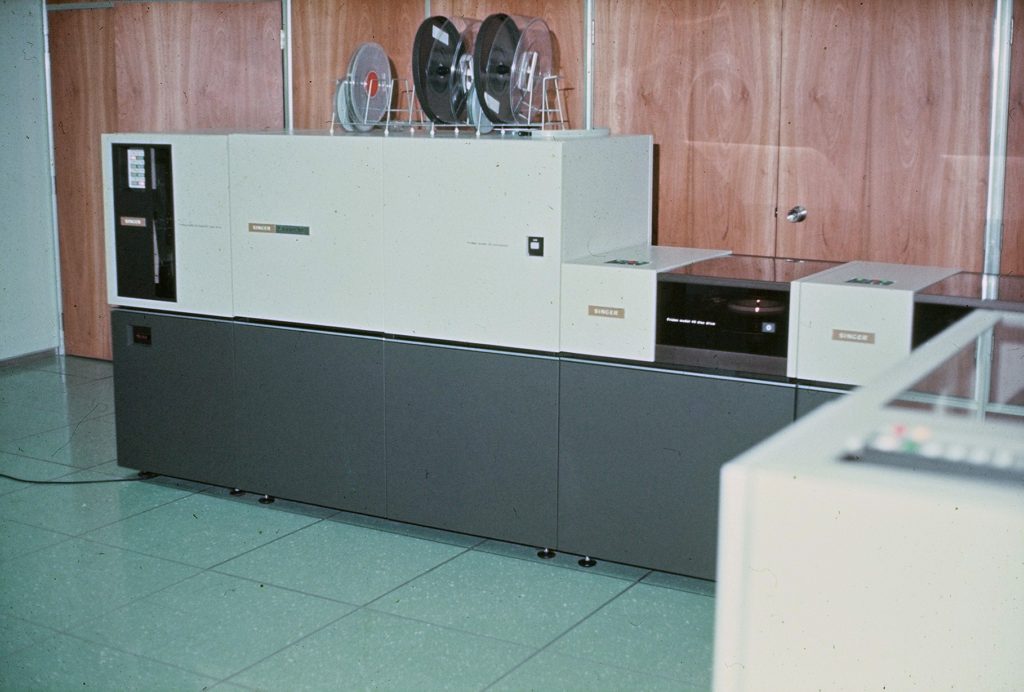
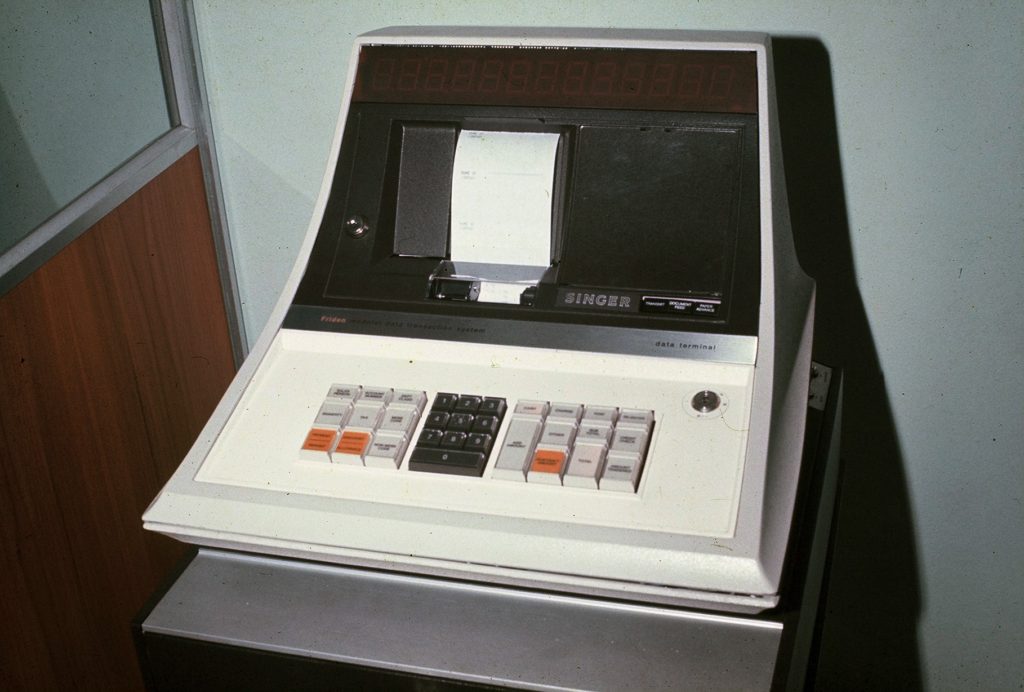
The Singer system was the first fully electronic point of sale system used by Sears. Curiously, I found a photo of a Walmart that also used the Singer system. The first generation of electronic cash registers at Walmart were made by several different manufacturers, NCR and Data Terminal Systems, and apparently, also Singer. The registers are easy to identify with their sleek, “sci-fi” design.
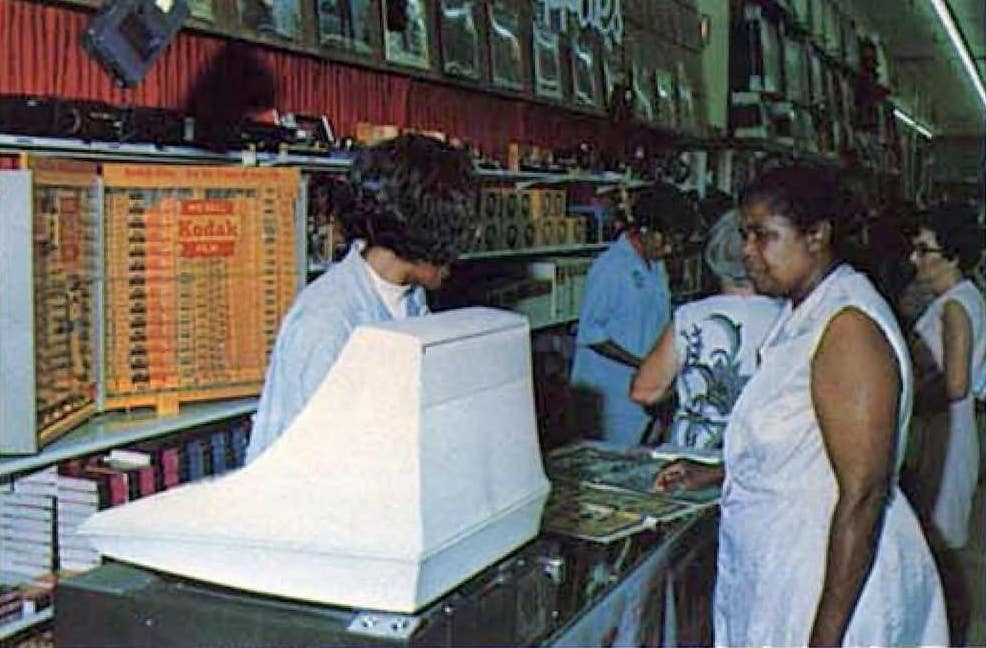
Notice the slight differences in the register above and the register at the bottom of this post. The picture above has a small “friden” logo and “data terminal” in lower case letters, the register at the bottom omits the “friden” logo and instead has “Data Terminal”. The register in the photo at the top of this post omits the “SINGER” name badge.
Here’s an example of a receipt from the Singer register at Sears. The registers were used by the chain into the early 1980s. In fact, I remember one of these registers still in the hardware department at the key duplication station in 1990 at our local Sears store.
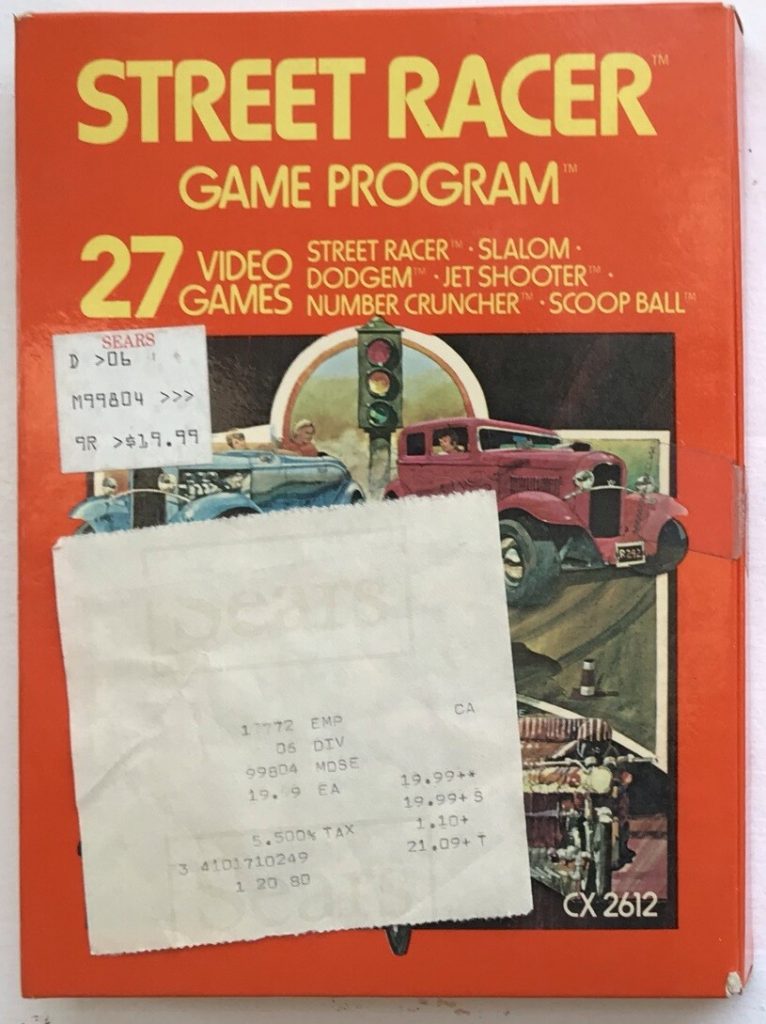
I have a marketing brochure that describes how the Modular Data Transaction System was designed to work.
MDTSHere’s some close up photos of the Singer cash register as found on worthpoint.com.
